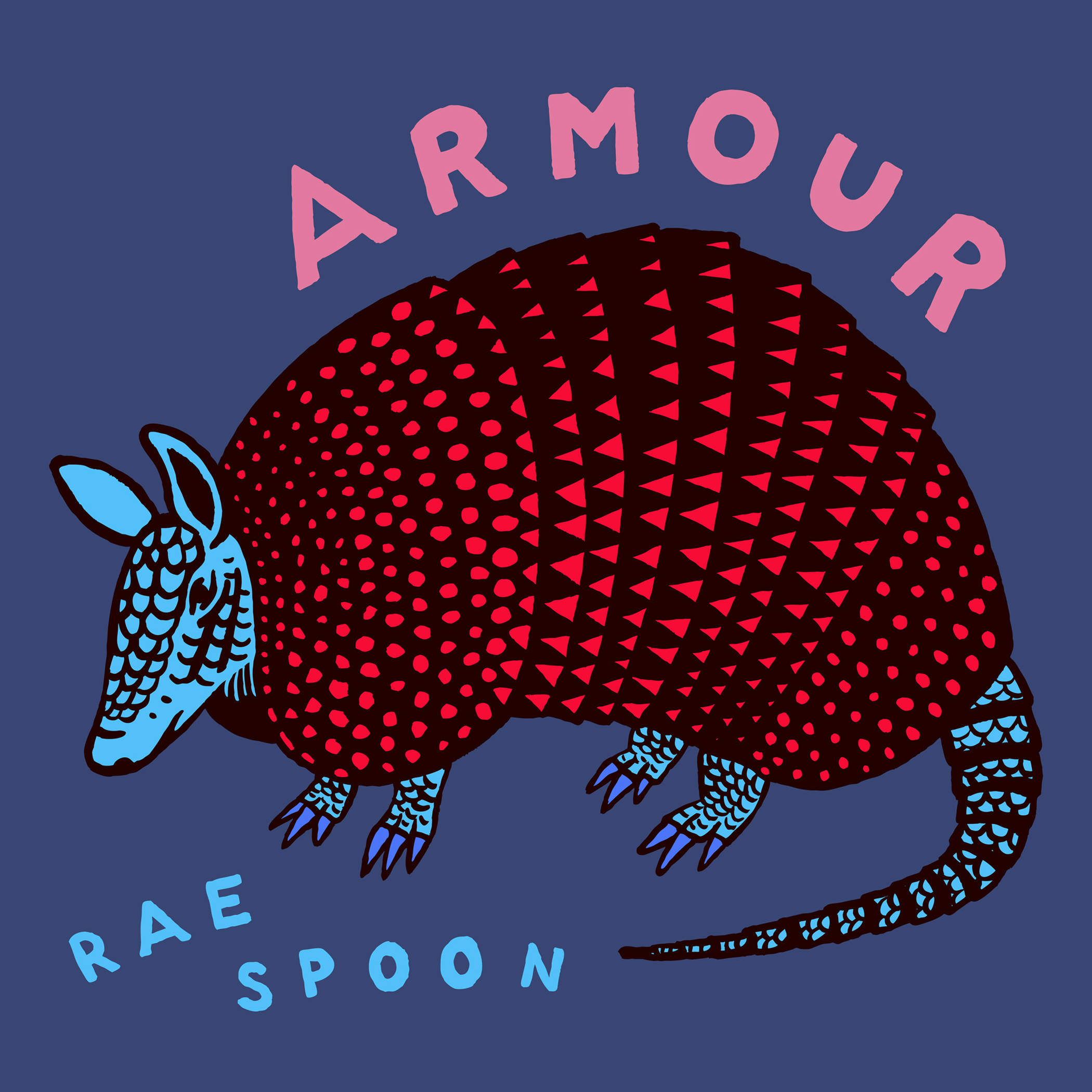Steeped in personal themes and experience, Spoon’s body of work is truly singular
Rae Spoon does everything. They* write books, they work on documentary-musicals for five years, and they make a lot of albums.
The Calgary-native’s eighth solo and first self-produced album, Armour, comes out on Feb. 19 and it’s bringing quite a different sound than their previous widely-acclaimed 2013 album, My Prairie Home. “I wanted to move into an electronic direction,” said Spoon about Armour. “In My Prairie Home, I kind of revisited a lot more folk, and a lot of different genres. The album before that was fairly electronic, so I wanted to get back to that.”
Over five years ago, Spoon embarked on a powerful, scary and personal journey that would become an immense success and an important project for both their career, and for LGBTQ awareness. The project was My Prairie Home, a documentary chronicling Spoon’s past experiences with gender confusion as well as their musical career. The project started out of another project; in 2007, director Chelsea McMullan was looking for a subversive country musician for a documentary she wanted to make. A friend told McMullan about Rae: “Her friend was like, ‘Oh there’s this trans country singer,’ so I worked on that and [Chelsea and I] became friends,” said Spoon.
A few years later, McMullan suggested an idea to Spoon for a documentary-musical about the prairies where Spoon grew up, and the project was built from there. Having grown up transgender in a Pentecostal household with a paranoid-schizophrenic father, Spoon had an interesting story to share, and an interesting relationship with the prairies.
The process for the documentary started with Spoon writing stories and songs for the movie. The stories got published into a book called First Spring Grass Fire, for which Spoon was awarded an Honour of Distinction from the Dayne Ogilvie Prize for LGBT writers in 2014. The songs were put into an album, My Prairie Home, which became a longlisted nominee for the 2014 Polaris Music Prize. And the movie? Well it became a shortlisted nominee for the Canadian Screen Award for Best Feature Length Documentary at the 2nd Canadian Screen Awards.
The documentary, as well as the soundtrack that accompanied it, were very personal explorations of Spoon’s life as an agender musician, their childhood, their experiences and their family. Spoon admits that it could be quite uncomfortable talking about such personals parts of their life during the filming process, and that it still is to this day.
But Spoon believes discomfort and honesty are important for writing. “I really think with writing, writing books and writing songs—writing anything—if you’re not writing something that really kind of challenges you or makes you feel uncomfortable, it usually doesn’t turn out to be very good… at least for me,” said Spoon.
Spoon admits that writing a new album after such an impactful project was an interesting experience, but they knew they wanted to move away from folk for a while. “It’s definitely interesting to try and write an album after something like that. I think the most important thing is not to keep replicating. Like, if something works, it’s better to move away from it, in my experience. Or else, you end up making like six albums that sound like it, and then you lose the reason why you started in the first place. So I’m always pushing myself to try new instruments and to write different songs, as different as possible.”
“Armour’s self-produced enigmatic soundscapes blur the lines between organic and electronic instruments,” according to Spoon’s website. Indeed, Armour’s sound is one of many sounds. The singer plays up their pure and strong yet fragile voice with groovy electronic supporting riffs and an interesting use of various instruments such as the cello, electronic drum kits and electric bass, and programs like analogue synthesizers.
Rhythmically and musically, Armour is miles away from Spoon’s country beginnings, but the album holds the same mature soul the singer has continuously demonstrated over their career through carefully crafted lyrics and an enchanting voice.
As the album’s producer, Spoon was also in charge of deciding when the product was finished. “When you get very into working on something, it gets hard to become a bit subjective so I took a lot of time, really working on the writing. I wanted the songs to make sense you know,” said Spoon.
While the singer enjoyed the experience, they admitted they were excited to finish up and get back on the road.
“I really wanted this album to come out because I was tired of not touring. I kind of pumped it out from like April to February. It was really a rush. I mixed the album and then it was mastered the next day and then the press release went out the next day, so it was a pretty bratty move on my part,” said Spoon with a laugh. “It worked out in the end.”
In My Prairie Home, Spoon said “when you don’t fit into the gender system, people tell you like you shouldn’t exist, and you don’t exist. I’m here to tell ya… I exist.”
For people who feel different or who still don’t know where they exist, Spoon’s advice is to talk. “Something that always works for me is actually being more open about my experiences, because sometimes I think we’re socialized to think that what makes us different, we should be hiding it or trying to not be it.”
Rae Spoon will be performing with Glenn Nuotio in Montreal on Feb. 25 at Casa Del Popolo. Their new album Armour is out Feb. 19.
*Note: Spoon prefers to be addressed by the pronoun “they,” as clarified in an interview with Now Magazine; “I think the ‘they’ pronoun is a pretty cool thing. It’s letting a lot of people not have to identify as a man or a woman. Whatever it means to them.”
